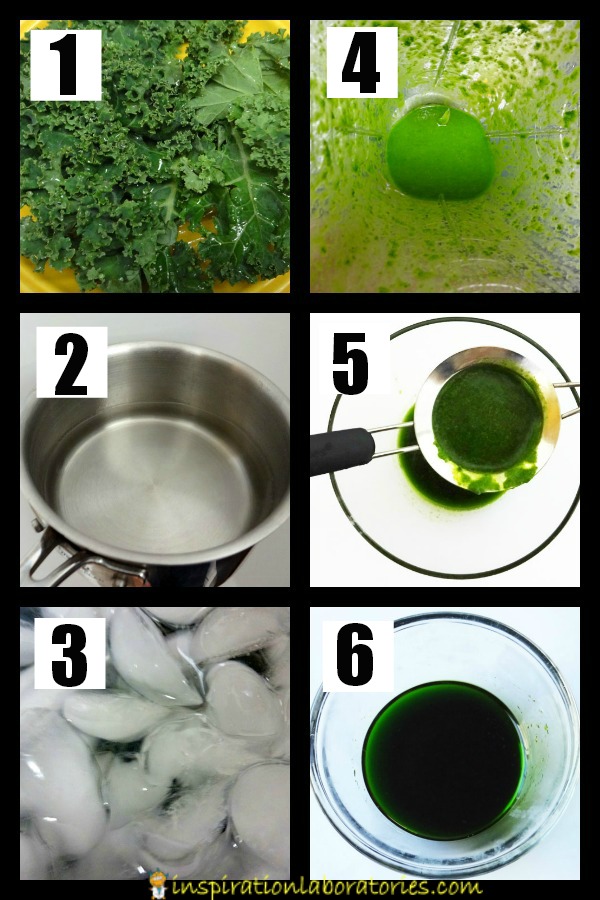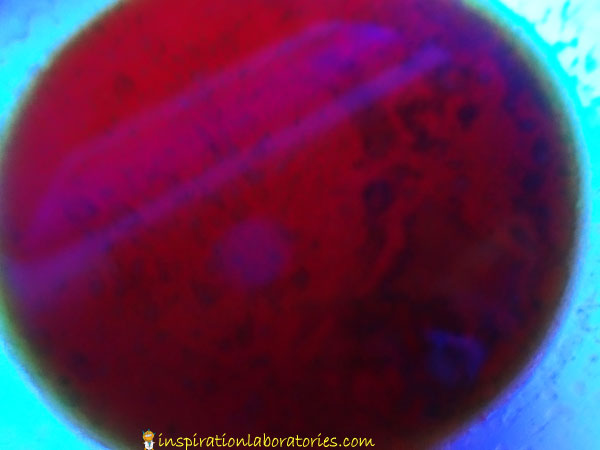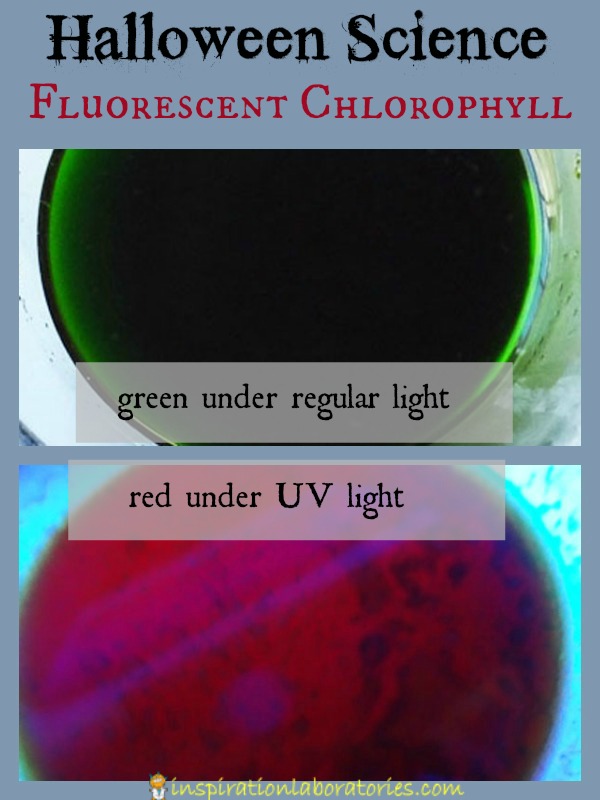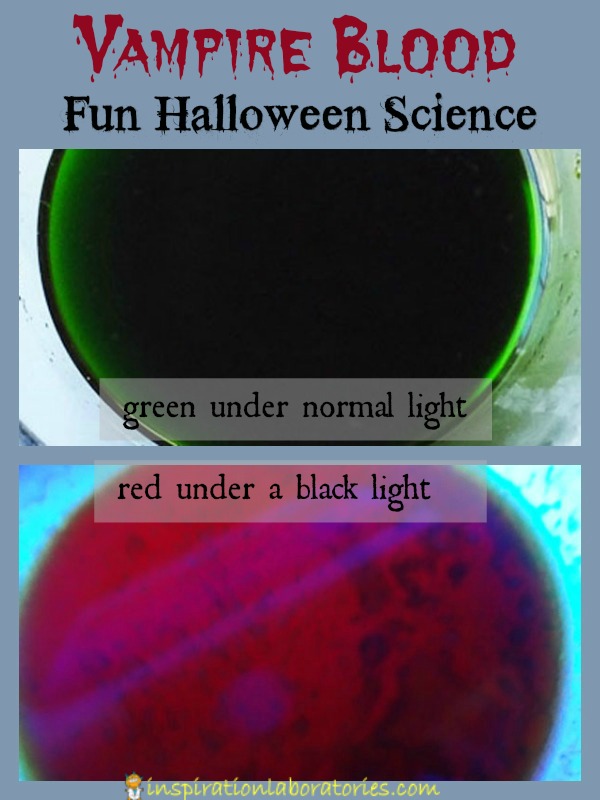Halloween Science: Fluorescent Chlorophyll
Looking for a fun Halloween science demo to impress your friends? Try this glowing experiment with chlorophyll and a black light. Chlorophyll is green under normal light, but fluoresces red under UV light. I get commissions for purchases made through the affiliate links in this post.
Halloween Science
Glowing Experiment
Materials:
- a large handful of green leafy vegetables or herbs {I used kale. Try spinach, cilantro, parsley, or even mint.}
- pan of boiling water
- tongs
- ice bath {bowl filled with ice and water}
- vegetable or canola oil
- blender
- fine mesh strainer
- black light
Chlorophyll Extraction

Instructions:
- Wash a large handful of green leafy vegetables. (I used kale.)
- Place the green leafy vegetables in boiling water for 1 minute. (This step should be done by adults only.)
- Take the green leaves from the boiling water and place in the ice bath for 1 minute. (This step should be done by adults only.)
- Place the green leaves into the blender. Add a little oil and blend. If needed, add more oil. You want the leaves to blend well into a thin liquid.
- Strain the green oil through a fine mesh strainer. (Chunky leafy goo will remain on top of the strainer; oil will fall through.)
- The chlorophyll is now infused in the oil.
Chlorophyll is green under regular light, but will fluoresce red under a black light.

Halloween Science
This demonstration is perfect for Halloween. Everyone loves to explore with a black light and see what things fluoresce. Would you ever expect a green oil to look red under UV light? And the red oil really resembles blood. This reminds me of Steve Spangler’s Vampire Slime (affiliate link) – it does a similar color change depending on how the light is passing through the goo. Vampire blood – green under normal light; red under UV light? Sounds like Halloween to me!
Even though this activity isn’t very hands-on for kids, they’ll still think it’s cool to observe the color change. Share the science behind what is happening with older kids (and your friends).
Choose an herb for your green leafy vegetable and you will have an herb infused oil that could be a fun {and tasty} party food.
Fluorescent Chlorophyll
The Science Behind It
Chlorophyll is a green pigment found in plants. Boiling the leaves helps allow the chlorophyll to be extracted from the cells. The chlorophyll dissolves in the oil. {Chlorophyll will also dissolve in alcohol but not in water.} Chlorophyll is a pigment that absorbs all wavelengths of visible light except green. This is why plants appear green. The green light is reflected back. The same does not hold true for ultra violet light like that produced by a black light. The chlorophyll absorbs the UV light and fluoresces a red color. Fluorescence only occurs while the UV light is on. Once you turn it off, the chlorophyll will reflect green light again. (This is not the same as things that glow in the dark after the light is turned off. These objects emit light due to phosphorescence – like my glow in the dark monster shirt.)
More Halloween Science Activities
Halloween Robot Spider Craft – Design a Halloween spider or any creature of your choosing. Then, add a vibrating motor to make it move.
Halloween Science: Dancing Ghosts and Bats – Use static electricity to make Halloween creatures dance.
Subscribe to the Inspiration Laboratories newsletter. Each issue has exclusive hands-on science explorations for children, a recap of our latest activities, and special resources selected just for you!

This post was originally published on October 24, 2012.



Leave a Reply